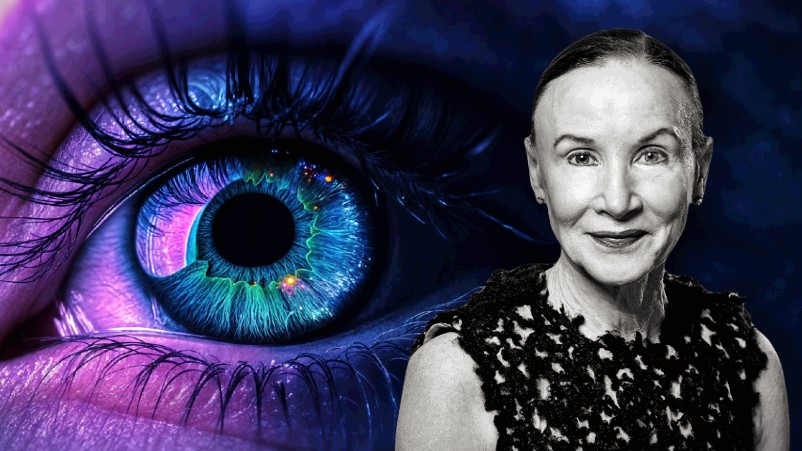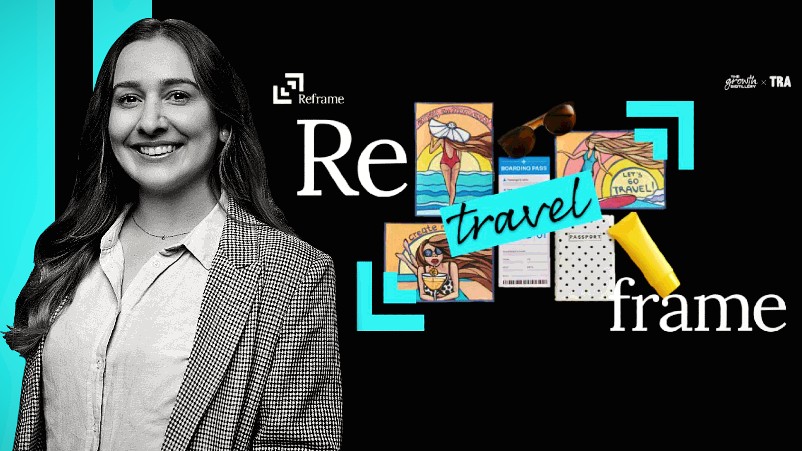‘We’re doing 10k sign-ups a week with very little advertising’: SCA chiefs back personalisation engines, 5x higher CPMs, lower churn than Disney+ to accelerate payback; Spotify loses share

Mood music: SCA chief executive John Kelly (left) and CFO Tim Young see upside as logged-in audiences drive smarter audience data, targeting, personalisation beyond podcasts – with half the churn of video streamers.
John Kelly’s first set of results at the helm of Southern Cross Austereo underwhelmed the equity market. But the firm is at the midpoint of a six-year digital transformation – and he’s backing logged-in audiences, sharper data analytics and sticky personalisation to deliver upside across the digital audio business – not just podcasts. His new CFO, former Disney ANZ financial boss Tim Young, claims Listnr churn rates are already half that of the SVOD streamers, and can charge 5x more for true one-to-one personalisation. Meanwhile, Kelly reckons SCA is starting to seriously cut Spotify’s turf. He estimates the global audio streamer’s revenue is back double digits over the last 12 months – and expects to take more, if buyers walk the talk.
What you need to know:
- SCA posted digital audio revenue growth of 36 per cent to $21m. CEO John Kelly said a chunk of that came from Spotify’s share – and sees more to come as uber app Listnr's on-and-off platform monthly monetisable audience hits 8 million.
- But it’s well shy of the $32-$35m predicted by former chief Grant Blackley last November.
- Kelly and CFO Tim Young, formerly finance chief at Disney, are backing the major investment made in Listnr to start moving the needle across the broader business.
- That’s because logged-in users – coming in at 10,000 a week with “little advertising” and expected to hit 2 million this financial year – provide much sharper data and targeting opportunity for marketers and far deeper personalisation across the circa 80 per cent of radio listening now taking place through the app.
- Young said versus SVOD players, SCA is tracking at 50 per cent less churn as a result of its personalisation engines starting to fire.
- The heavy capex investment is now done, per Kelly, with Listnr expected to turn a profit next financial year, 12 months ahead of SCA's six-year transformation plan.
- He thinks digital audio revenue growth will ultimately catch-up with audiences – and said SCA is already taking a greater share of digital-only briefs and budgets as marketers move money out of analogue channels.
- But for now he thinks buyers are undervaluing the kind of granularity they have long called for.
All I can say is we’re taking share off somebody. And the only one it could be is Spotify.
Audio is on the cusp of its “BVOD moment”, reckons Southern Cross Austero boss John Kelly. He’s expecting SCA’s major martech investment to quickly deliver returns and siphon more money from Spotify, which currently trousers around 50 per cent of the $200m-plus digital audio market in Australia. Kelly suggests Spotify’s local revenues may be down ten percentage points over the last 12 months – with SCA scooping a share as Listnr revenues climbed 36 per cent to $21m. “That’s relatively imprecise,” said Kelly, “but all I can say is we’re taking share off somebody. And the only one it could be is Spotify.”
He predicts that trend to continue: “As Spotify consolidates into its major markets, it’s obviously spending less on content and marketing in this marketplace, which really gives us an opportunity.”
Former Disney ANZ CFO and strategy chief Tim Young said the firm’s personalisation engine is already delivering far lower churn rates – circa half those of SVOD players – while trumping them on one-to-one capability “is worth four to five times as much on a CPM basis”.
The heavy lifting in relation to our capex spend for Listnr is over. Now it's about realising the benefits of Listnr across all of audio. We talk about podcasts, but at the end of the day, 80 per cent of our listening on Listnr is still radio – and having a known listener is far more valuable than having an unknown listener.
Tough audience
SCA’s FY23 results, “a pass mark”, per Kelly, nevertheless underwhelmed investors – its share price is down 13 per cent since last week’s announcement. The $21.3m in digital audio revenues is also some way off the $32-$35m predicted by then CEO Grant Blackley in November last year, who said SCA’s digital audio revenues were growing “no less than 30 per cent per quarter”.
While 36 per cent annual growth is no mean feat, it suggests SCA is being buffeted by the broader ad market headwinds hurting some of Australia’s largest media owners and is still struggling to unlock value from its digital inventory, for years bundled with radio ads.
But Kelly, in his first outing at the helm, said the hard investment yards – the firm has poured tens of millions into Listnr, building it from scratch – are done. Going forward, per Kelly, the overhaul means SCA has a far better idea of who its listeners are and what they listen to across all digital channels, insight CMO Nikki Clarkson suggests is already delivering "monumental gains".
“The heavy lifting in relation to our capex spend … for Listnr is now over. Now it's about realising the benefits of Listnr across all of audio,” Kelly told Mi3. “We talk about podcasts, but at the end of the day, 80 per cent of our listening on Listnr is still radio – and having a known listener is far more valuable than having an unknown listener. That's what Listnr provides.”
Broader play
Hence Listnr, now forecast to breakeven by the end of this financial year, is then expected to start driving better results across the business. Kelly admits that breakeven target, a year earlier than previously forecast, is “about 50-50” due to revenue growth versus cost out. But he predicts growth to quickly outweigh cost cutting – backing SCA to take a greater share of broader digital media budget pots as well as more from Spotify.
“The level of digital-only briefs by big brands is increasing,” said Kelly, suggesting circa 10 per cent of the entire market is now cutting out analogue buys altogether.
“This is not just about SCA and Listnr, this is about the broader digital audio landscape. I compare digital audio and what we're seeing in terms of growth trends to the BVOD moment for audio.”
But the buy-side, advertisers and agencies, don’t yet seem to fully aligned, Kelly acknowledges.
“We think we're more than a couple of points below [share of ad revenues versus share of audience],” said Kelly.
“You only have to look at the audience levels and what we're achieving, maintaining and growing vis-à-vis particularly TV. So we think we're underweight.”
We're doing about 10,000 plus a week in terms of [Listnr] sign-ups with very little advertising.
Acquisition powering
Kelly is confident the tide will turn – because SCA’s martech stack is now driving audience growth for little further outlay, and the money usually follows.
“We're doing about 10,000 plus a week in terms of [Listnr] sign-ups with very little advertising,” per Kelly, putting Listnr on track for 2 million logged-in users by the end of the financial year.
Kelly is backing CFO Tim Young, who spent five years building Disney+ during 12 years with the firm, to apply those streaming smarts to extract more from SCA's audiences.
“He brings a lot of insights in terms of everything from churn to CPMs to lifetime values, which is incredibly valuable,” said Kelly.
[Personalisation] is by far and away the most effective way of making that content more sticky, to the point where what we are seeing here is churn rates that are probably half what you would see in a paid [SVOD] subscriber.
Personalisation push
Young suggests digital audio has a bigger target to aim for than his erstwhile employer and its peer-set.
“In terms of where you can consume this content, in the video market we were competing for two-and-a-half to three hours a day,” said Young. “Whereas in the in the audio field we can compete pretty much anytime people are awake, which gives it a much higher ceiling.”
He thinks the tech stack now in place will also move the needle.
“One of the key drivers of the growth we saw at Disney+ in this market really revolved around the ability to analyse, merchandise and personalise the experience for a particular viewer and I think SCA and Listnr have a real benefit there,” said Young.
Plus, it’s a genuinely personal medium, he argued, which ultimately means SCA can charge more to access its audiences.
“Unlike the video space, Listnr is actually a one-to-one communication. One of the challenges SVOD players have always had is who else is in the living room. But this is a set of headphones, you’re actually talking to somebody directly. So that is worth four to five times as much on a CPM basis,” according to Young.
Naturally that means that SCA can better personalise to individuals. “That is by far and away the most effective way of making that content more sticky, to the point where what we are seeing here is churn rates that are probably half what you would see in a paid [SVOD] subscriber,” Young added.
While the capex is largely done in turning SCA into a tech company that can deliver sharper personalisation and analytics, investing further in resource to fully harness them is required – both buy-side and, at least educationally, sell-side.
“Absolutely,” per Young. “It's the problem and the opportunity.”
Half way through the six-year transformation project he initiated with Blackley, Kelly’s faith remains intact.
“I think we have plenty more upside ahead.”

